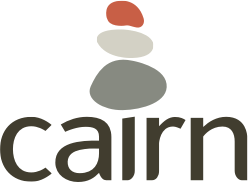By Antionette Meeks of Cairn Guidance, a Dove Self-Esteem Project Partner
Growing up can be quite the adventure for today’s youth. Some of us, reading this blog, grew up prior to or just as the cell phone or the internet came to be in existence. Then there is the explosion of social media platforms. Today’s youth are growing up surrounded by all kinds of technology. They “game” with people they do not know who may live in another country, inviting them into their personal spaces. Youth are also confronted with AI or artificial intelligence.
Whatever concerns we had growing up were limited to our immediate surroundings. There were no permanent footprints for the world to see or even comment on. Speaking of comments, our students receive an assortment of comments, when they post something, from people across the nation or world who, again, do not know them. The reader just reads the post, views the image or selfie, or the video and leaves a comment. There are a lot of people, potentially including strangers, who may impact a student’s self-esteem and body confidence through their words or emojis. And not always in a positive way.
Going back in time, maybe twenty or thirty years, young people viewed images in magazines, on billboards, in movies or television. These were still “glammed up” images, but… The difference now includes the internet and various forms of media, including social media. These forms of media are now in the hands of youth via cellphones, tablets, watches, or computers. They also have access to filters to help them appear like whatever the image is that they see as what is acceptable to others. Media, including social media, while it has positives, it can negatively impact youth, our students.
Data from the New 2023 Dove Self-Esteem Project Research found that 80% of youth believe their peers are addicted to social media.
According to The Common Sense Census: Media use by Tweens and Teens, 2021, social media use grew faster over the recent pandemic than it had in the prior four years. Tweens are defined as youth who are 8 to 12-years of age and teens are defined as those who are 13 to 18-years of age. Media use, which includes watching television, online videos, playing video games, social media, roaming through websites, creating content, or e-reading averaged 5:33 hours for tweens and 8:39 hours for teens. One in five tweens are on social media every day. That’s an average of 20% of their population. Tweens, on the other hand, spend 1:27 hours on social media each day. Eighty-four percent of teen have used social media. Tween and teen boys use media more than girls.
A research article, Media and Body Image in Children and Adolescents, notes that adolescent girls who used a lot of media tended to have poorer body image. While there is not the same amount of research for adolescent males, correlational research shows there is a relationship between media use and exposure to body image which leads to body image concerns for these males, as well. Additionally, the research shows that more use and exposure predict poorer body image over time.
Advent Health for Children sums it up in The Relationship Between Social Media and Body Image. They suggest that children, teens, and college-age youth, at these developmental stages, are particularly vulnerable to developing negative body image, as a result of the overconsumption of social media. Not only is social media a concern, but all forms of media.
Our students are using filters and image editing apps prior to posting or sharing selfies. Trying to live up to an appearance ideal that does not exist can cause anxiety and stress, among other things. According to the New 2023 Dove Self-Esteem Project Research, 50% of youth believe that they and their peers feel anxious because of social media. What can educators do to impact the by-product of anxiety and other feelings, as well as the negative influences of appearance ideals promoted by media, professional and personal, and social media? It is important for educators to be encouraging and to help students understand they are special and perfect just the way they are. Curricula, such as the Dove Self-Esteem Project (DSEP), support an educator through researched lessons that engage the student and help them to redirect their thoughts and belief regarding body image and appearance ideals. Many of those reading this blog have taught the DSEP Confident Me! single or five-lessons. DSEP also provides My Hair My CROWN and the Proud to Be Me lessons.
My Hair My CROWN is a 90-minute workshop designed for educators, parents, and mentors to boost hair confidence in 11-14-year-olds with coils, curls, waves, and protective hair styles, while building allyship to create a respectful and open world for national hair. Target audience: 11–14-year-old students of color. Proud to Be Me is a single lesson, two-hour body image program that explores different sources of pressure to change appearance and learn skills to push back against the urge to conform to appearance norms. Target audience: LGBTQ2S+ youth and allies, ages 11-14.
It is important for students to feel good about themselves and to embrace their authentic selves. DSEP is a partner with educators as they help their students become their best selves.
If you have not explored or used Confident Me! or would like more information about the Dove Self-Esteem Project, My Hair My Crown or Proud to Be Me, please visit the website at www.Dove.com/selfesteem or email us at info@cairnguidance.com.

Leave a Reply